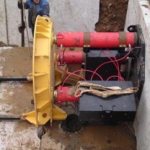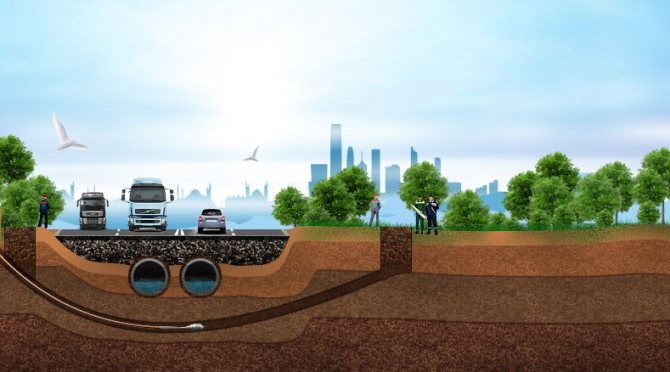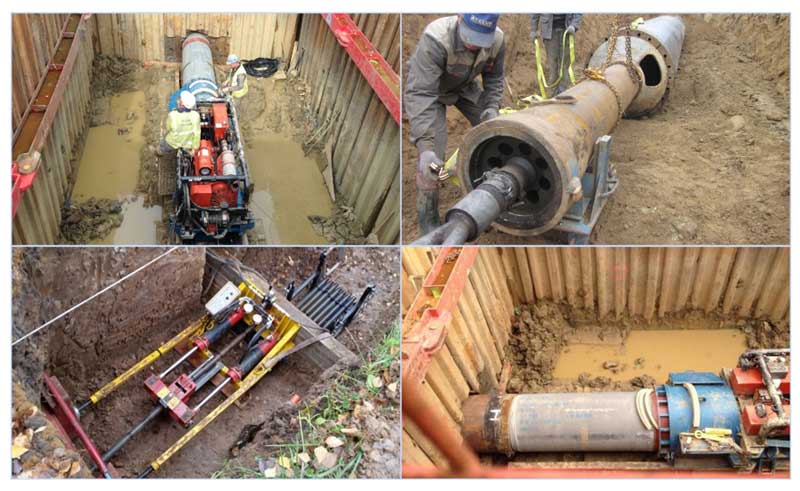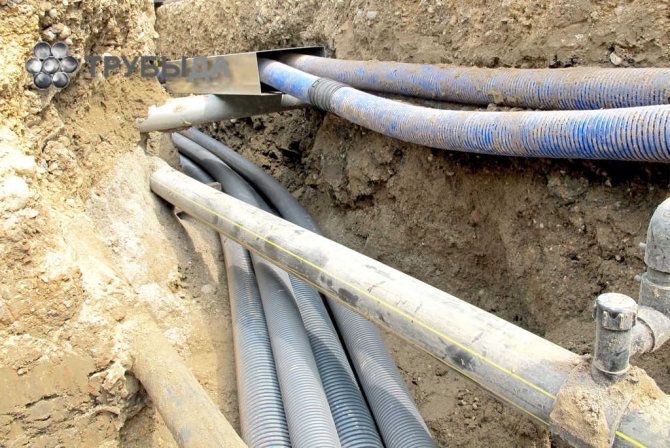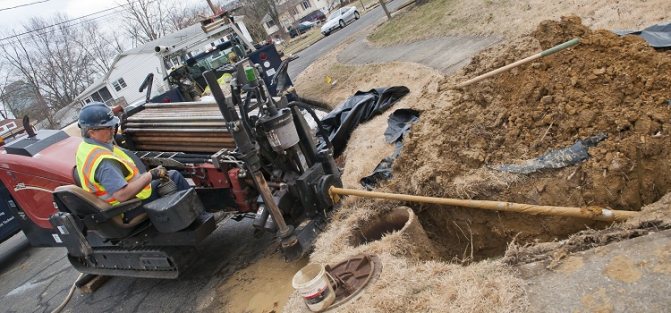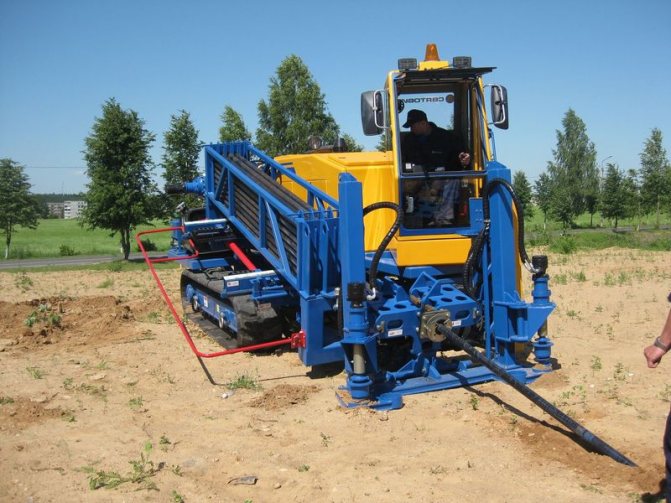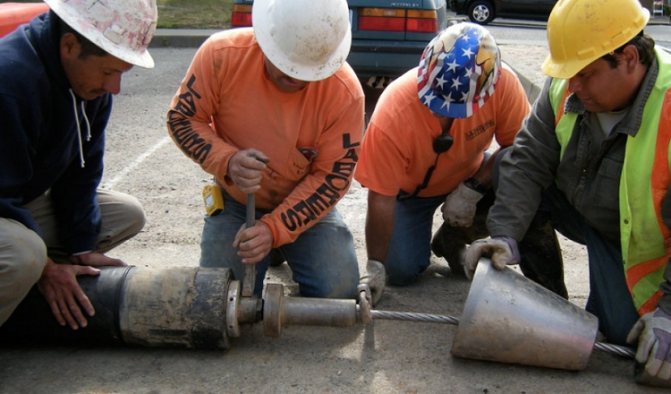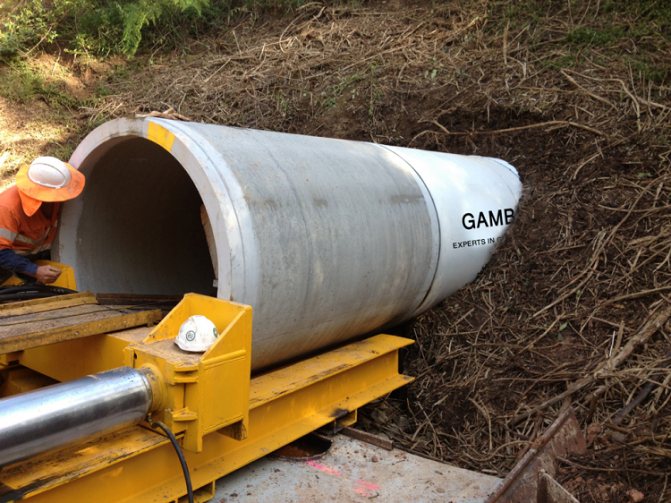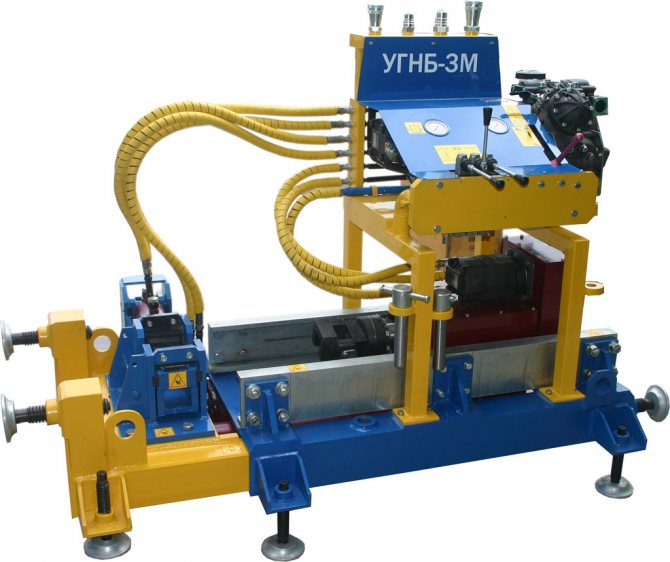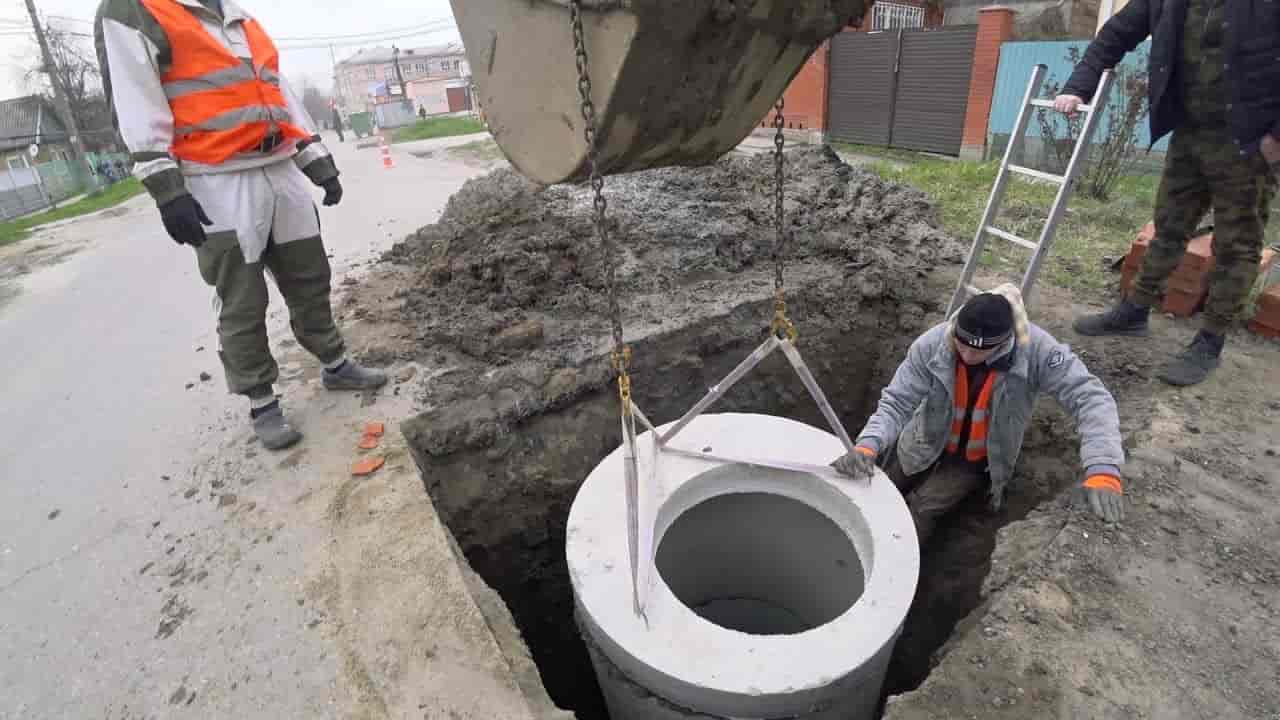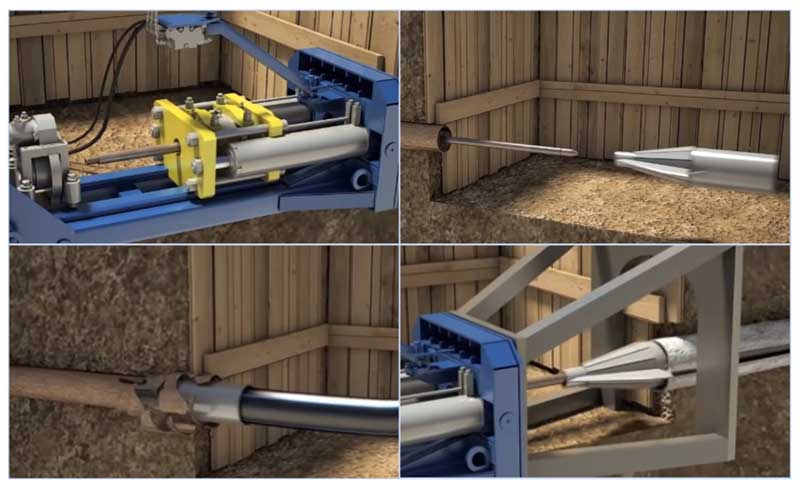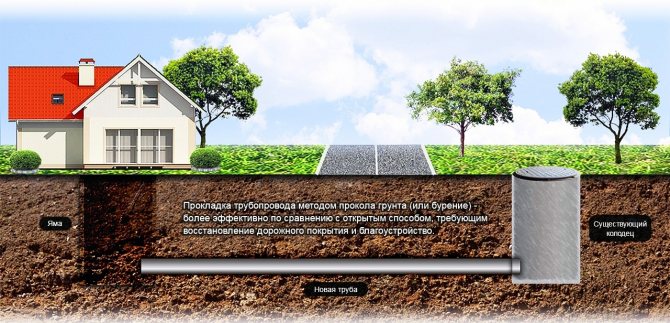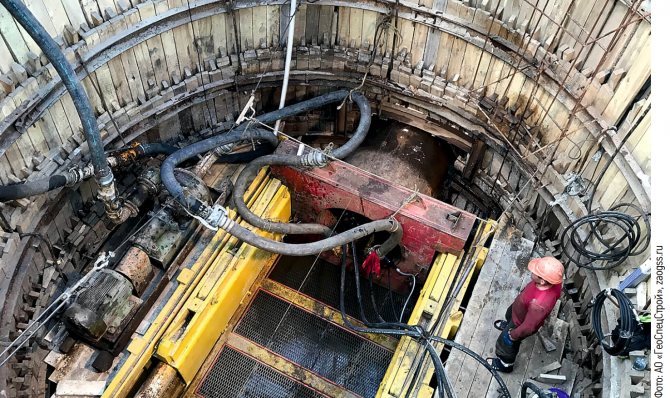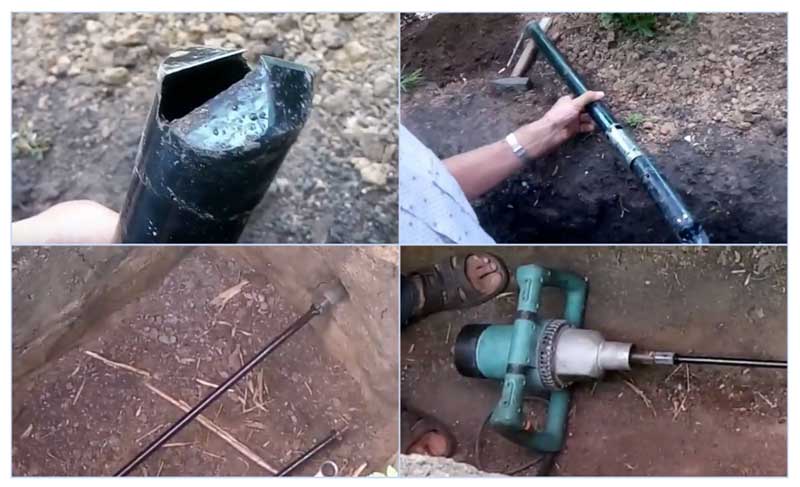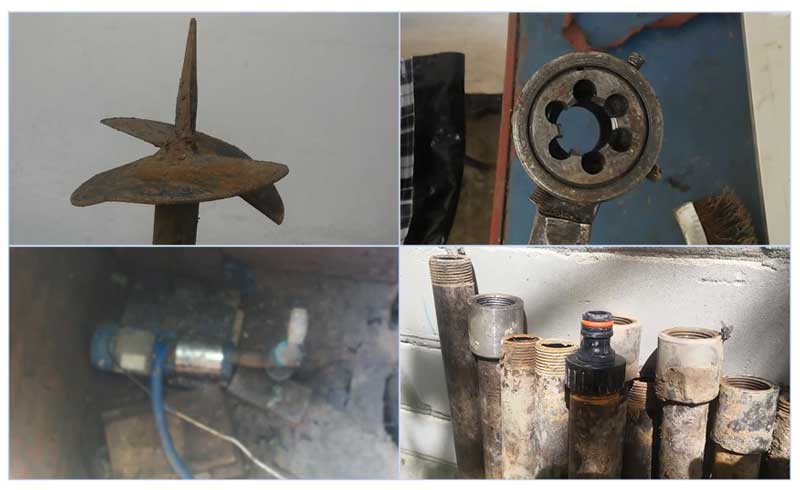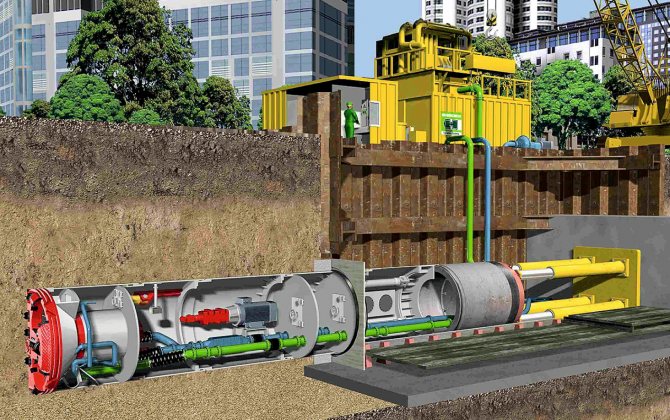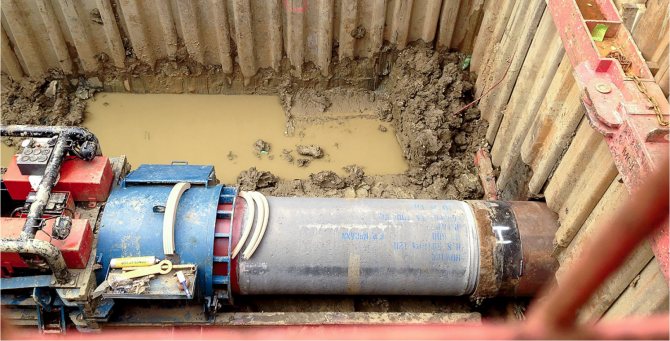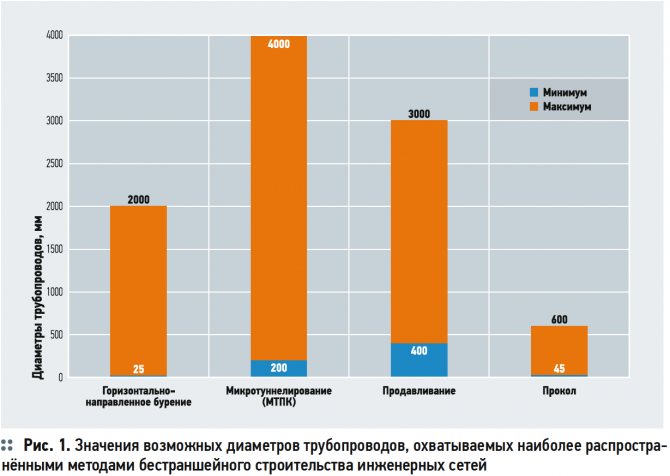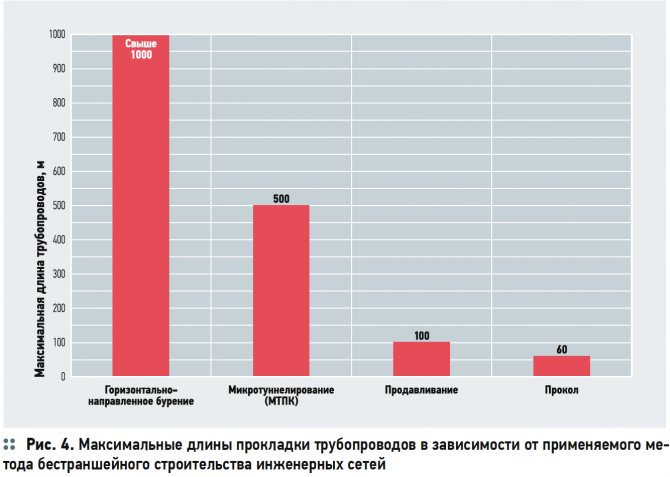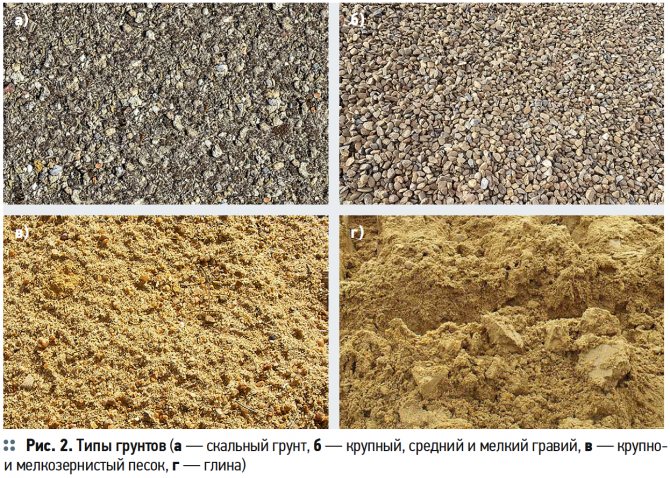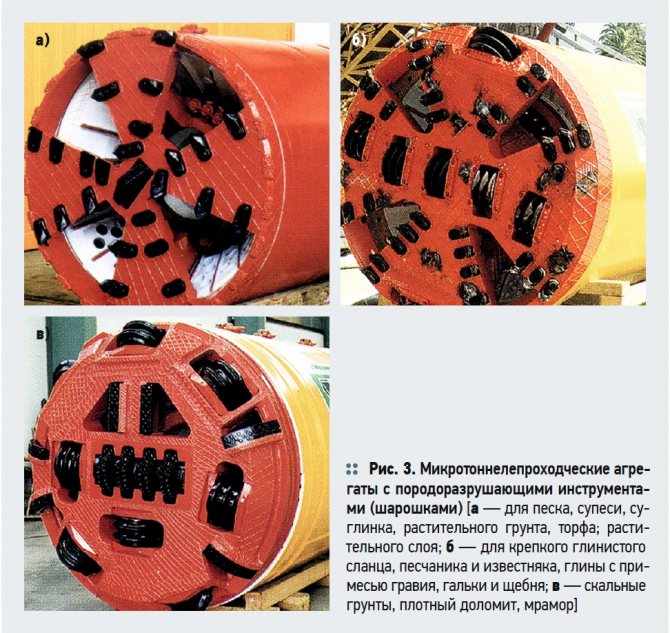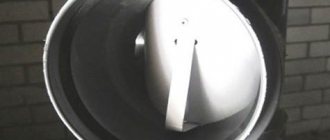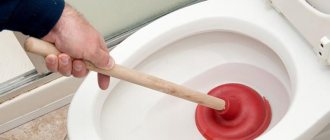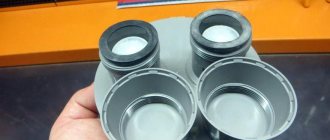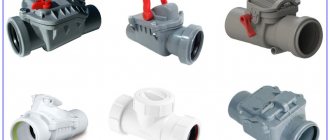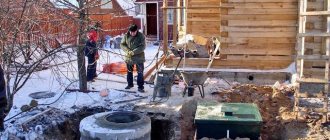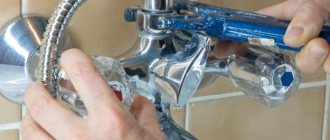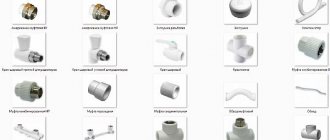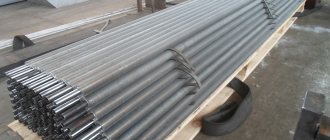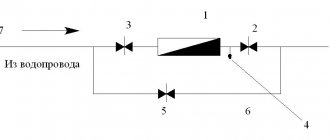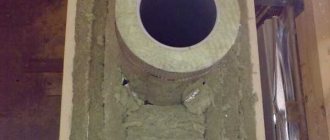If underground utilities cross a road or railroad track, the dismantling of such objects can be extremely difficult, and often even impossible. To solve the problem, laying pipes by the puncture method will help. This method is much easier and cheaper to implement.
For those who want to know how pipes are laid in the ground without disturbing ground coverings, demolishing buildings, moving mobile objects, we will reveal the specifics of the technology. Here you will find out what equipment is used in the course of work, in what way punctures are carried out.
In addition to the title technique, we described alternative options for laying pipes in the ground using trenchless technology, attached diagrams, photo selections and video materials.
Hydro-, vibration puncture and punching
Distinguish between hydro and vibration punctures. In the first case, a water jet is used as a tool for pushing through the soil, which, under high pressure, beats from a special tip.
This method is especially effective on loose sandy soils that are easily washed away by the jet. It allows you to make a hole with a diameter of about 50 cm in a minimum amount of time. But the maximum length of the well during hydro-piercing is 30 m.
Vibration puncture, as the name implies, is carried out with the help of vibration exposure. In the device for performing a puncture, shock-vibration-indentation installations with exciters of longitudinal-directional vibrations are used.
Static indentation is combined with the impact on the ground of shock impulses from a vibratory hammer. The method is used on water-saturated and low-moisture sandy soils both for laying pipes and for extracting them. The borehole diameter can reach 50 cm, and its length - 60 m.
The punching method is carried out using jacks, like a puncture. But in this case, the pipe is directed into the ground with its open end. In the process of advancing the structure, a dense plug from the soil is formed in the pipe, which is then removed.
To perform this type of work, from two to eight powerful (200-400 tons) hydraulic jacks are used, for the operation of which it is necessary to install a thrust wall with a frame and a headrest.
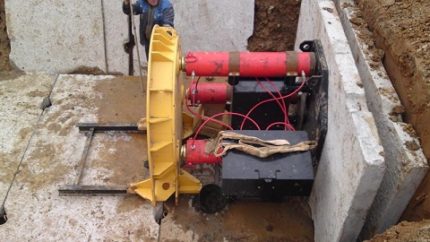
Digging is a trenchless method of pipe laying, which is carried out using special high-power hydraulic units.
During a shift, such a device can pass up to 10 meters of soil, and the total length of the well usually does not exceed 80 meters. If it is required to lay a longer route, it is divided into separate sections of no more than 80 meters.
This method also requires the device of the initial and final pit, in which the necessary hydraulics are installed.
Each section is driven twice: in the forward direction and then in the opposite direction. The operator, who is in the pit, controls the operation of the mechanisms and the quality of punching.
Technically, this method is more difficult than a conventional puncture, but it can be used on almost any soil. The diameter of the structure can be up to 172 cm. Cores formed inside the pipe can be taken manually or mechanically.
Pipeline relining
Relining is a remediation method in which new plastic pipes are drawn into the existing pipeline. Relining can be carried out both without destruction and with the destruction of the old pipe.
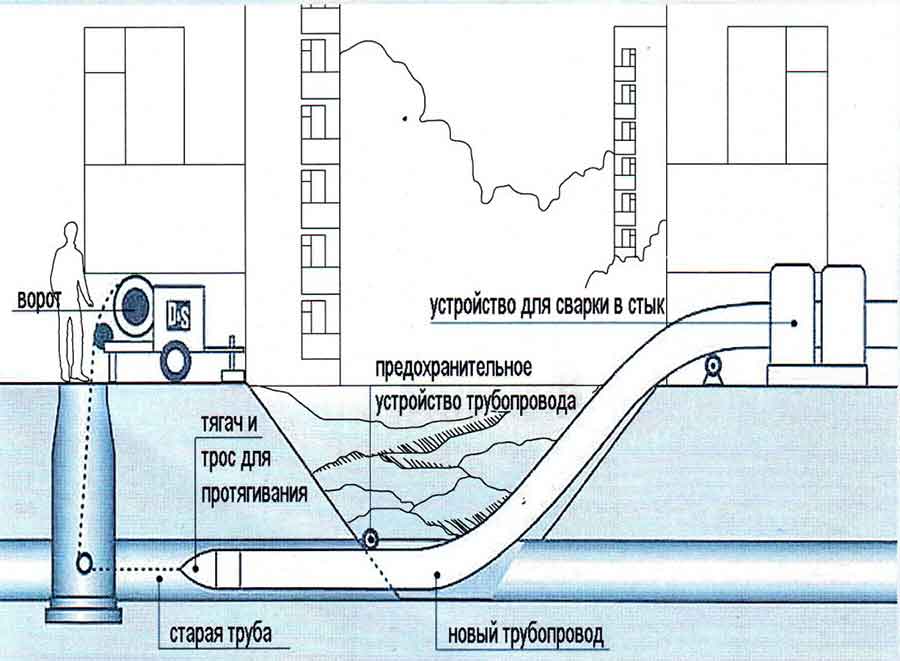

Pipeline relining diagram.
Before you start pulling a new pipe without destroying the old one, you need to carefully examine the inner surface of the old pipe for the presence of foreign objects and other insurmountable obstacles in it.
If it is necessary to maintain or increase the diameter of the pipeline, a method with static breaking of the old pipeline is used. In this case, the rods are passed through the destructible pipeline from the side of the previously dug receiving pit (size 2x3 m). At the end of the stretched rods, in the starting pit, an expansion knife is attached, which is connected through a swivel to the HDPE pipe being pulled. At the bottom of the receiving pit, hydraulic jacks are mounted on the frame, into which the rods are tightened. With the help of these jacks, a carriage with fixed rods is set in motion. To improve the fixing of the frame, a thrust plate is mounted in the pit. Broaching the HDPE pipe continues until the knife is completely out into the receiving pit. During the broaching, the rods with a length of 1.5 m are periodically removed. Thus, during this process, the old pipe is cut with a knife, expanded and a new polyethylene pipe is pulled into it.
Some nuances of relining
When choosing a pipeline repair method, very often, due to its cost effectiveness, the most common method is relining. When preparing for pipeline repair, first of all, it is necessary to select the diameter of the HDPE pipe, which should ideally match the diameter of the pipeline being restored. On the surface, pipes 10-12 m long are welded and inserted into the pipeline being repaired. The section of the pipeline to be welded can be no more than 700 m long. Productivity, first of all, depends on the pipe diameter and can be up to 250 m per day.
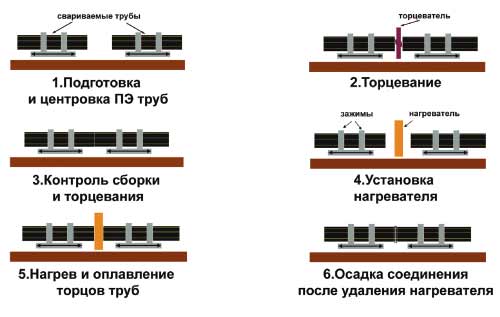

Welding scheme for polyethylene pipes.
Do not forget that when using butt welding, a collar is formed at the pipe joints, its height can be up to 15 mm. This nuance must be taken into account when measuring the gap between the inner surface of the pipeline being repaired and the new HDPE pipe. Taking into account the fact that the diameter of the pipe being repaired will decrease, its throughput will not change at all. This is due to the low hydraulic resistance of the inserted HDPE pipe.
Refurbishment by means of relining, without destroying the old pipeline, is permitted only in cases where a small change in the pipe diameter is permissible or when it is compensated by the improved flow capacity of the new pipeline.
The method in which the destruction of the old pipeline occurs, after which a new pipe is pulled, will be very useful in that situation if the relining does not allow creating the necessary pressure during the restoration of the pipeline. This method is well suited for work in difficult hydrogeological conditions, as well as when other communications or buildings are located near the pipeline being repaired.
Benefits of the puncture method
The demand for the puncture method is explained by its significant advantages over other options for performing this type of work. For example, a puncture is available at any time of the year, the high or low temperature of the outside air and soil does not matter much.
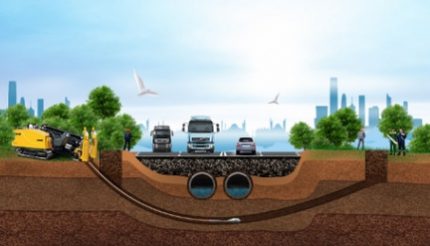

One of the advantages of the guided puncture method is that work can also be carried out in areas with an elevated water table.
The operation of the unit does not require the use of bentonite mud, the supply of water or drilling mud to the well. It is a compact and powerful unit that is equipped with a reliable electrical safety system. It is not difficult to deliver and install it. At the same time, the compact size does not prevent the device from working with high power ratings.
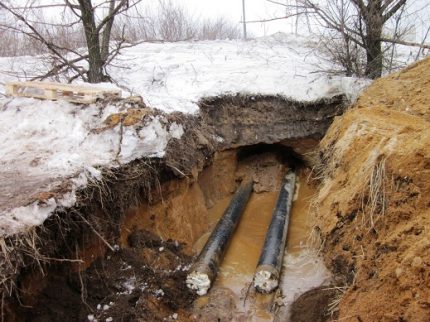

Trenchless pipe laying methods such as guided puncture can be successfully applied in both summer and winter.
The work time is also shorter than with other methods. Even if in the area where the puncture is performed, there is an increased level of groundwater, there is no need to carry out measures to drain water from the site.
During the passage of the expansion cone, the walls of the trench are also compacted, so no additional work is required in this regard.
Performing a puncture on different objects
The complexity and speed of this type of work largely depends on the conditions, i.e. on the terrain and characteristics of the object under which the puncture is performed. Drilling under a railroad bed usually requires a fairly serious design. First, you need to coordinate drilling with a number of railway services.
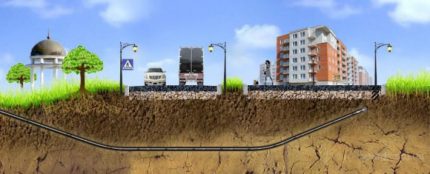

Using the guided puncture method within the city limits the integrity of road routes to minimize costs and not disrupt traffic
In Russia, you need to contact the departments of ECH, ShCh, RCS NODG, PCh and other services of Russian Railways. It is mandatory to draw up contracts for technical supervision, as well as for the installation of safety packages. All executive documentation must be agreed upon and provided to the railway authorities.
A package of documents is transferred to the distance of the path at the end of the cycle of work on laying pipes. In cities, a puncture under the road is in great demand when laying new communications, especially in places with historical sights.
The method allows not only to keep the usual traffic on the roads, but also to prevent the destruction of the old pavement, when it is necessary to lay pipes under such sections.
The restoration of such an object can be difficult, and sometimes impossible. In cottage settlements, the laying of communications by the puncture method allows you to perform all work with minimal damage to ready-made objects: roads, fences, etc.
When and why a puncture is used
Puncture of the soil is carried out for the purpose of carrying out various types of engineering networks. Thanks to the technique, it is possible to carry out water supply, sewerage, communication lines, gas, electricity. The trenchless method is used for laying plastic and steel pipes.
Carrying out communications in this way can be carried out in pre-dug pits, wells, basements and semi-basements. In this case, the diameter of the well must be at least 1.5 meters. The work should only be carried out by highly qualified specialists. The duration of the service of engineering networks depends on the quality of the work.
The method of puncturing under the road is considered the most profitable, economical and fastest way of laying communications. At the same time, it is not required to dig a trench and restore damaged ground objects, previously laid communications, road surfaces and green spaces.
Assessment of alternatives
In addition to the method of controlled puncture, there are other options for the device of communications in the soil without the device of trenches. Sometimes the alternative may be more acceptable than a puncture, it all depends on the specific situation.
Horizontal directional drilling, which is also called oblique direction, is used for laying pressure and non-pressure pipelines. Drilling in this way is performed from the surface of the earth. The diameter of the hole should be taken 30-50% larger than the dimensions of the pipes that are supposed to be laid in it.
The hole is not expanded immediately, but in several stages. In this case, a bentonite solution is used, which is mixed with the loosened soil and facilitates its removal from the trunk.In addition, this working fluid is used to cool the drilling tool, and then it forms a layer on the walls of the shaft that protects them from destruction.
A sludge pump is used to pump out the spent bentonite solution. After pumping out, the unnecessary solution must be taken to a landfill for further disposal. If the work is done correctly, the result is a clean well with strong walls.
Drilling rigs for this type of work have different characteristics such as torque and pulling force. The length of the pipes that will be laid in the soil layer, which can reach 1000 meters, depends on this.
The permissible pipe diameter is 120 cm. Both metal and plastic pipes can be laid by horizontal directional drilling.
Drilling is performed along a pre-calculated trajectory, the movement of the drilling tool is controlled using a location system. The collaring angle can vary between 26-34 degrees.
Another important indicator when using HDD is the bending of the rods, which can be 6-12%, it depends on their type. Another popular trenchless pipe laying technique is auger drilling... For its implementation, a special hydraulic unit is used, which acts as a jack.
First, start and finish pits are made. The depth of each of them should be one meter deeper than the level of the pipeline. A hydraulic installation is lowered into the starting pit, which rotates the auger and punching pipes. As a result, part of the soil is removed and a pipe hole is obtained.
Then pipes, cases, etc. are installed inside. The maximum laying length is usually only 100 meters, but the diameter of the communications can reach 172 cm, the indicators largely depend on the type of soil on which the drilling is carried out.
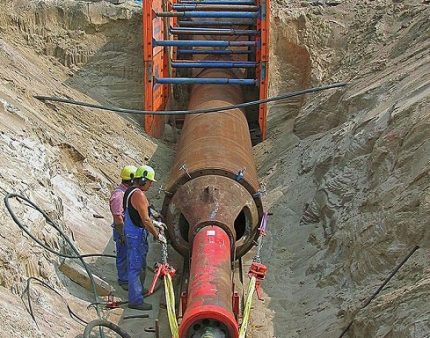

The method of punching steel cases is often used if it is necessary to lay pipes or cases of large diameter using trenchless methods.
To control the work during auger drilling, a laser is used, which ensures the correct angle of inclination of the drill, and also allows tracking the direction of drilling with high accuracy. After the auger reaches the finishing pit, it is removed from the resulting well in the reverse order.
Microtunneling Is a high-precision method of trenchless laying of communications, which is performed using a special tunneling shield.
A high power jack station is used to move the device. It affects the column of reinforced concrete pipes, which are attached to the shield. Gradually, the length of the well increases, so the length of the column is increased by building up reinforced concrete structures.
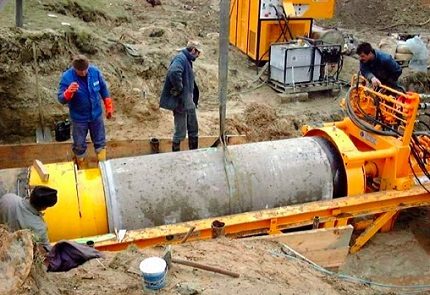

For laying reinforced concrete and steel pipes, the microtunneling method is used. It is performed using a special tunneling shield that loosens the soil
This method also requires preliminary preparation of two pits, the distance between them can vary within 50-500 meters. The jack installation must be lowered into the starting pit to a depth that corresponds to the level of laying communications. If the borehole length exceeds 200 meters, an intermediate jacking station is usually used.
The tunneling shield loosens the soil, which is washed out with water or bentonite solution flowing through the supply lines. The spent liquid, mixed with soil particles, moves to the sump along the drain lines. After the tunnel shield enters the finishing pit, the work can be considered completed.
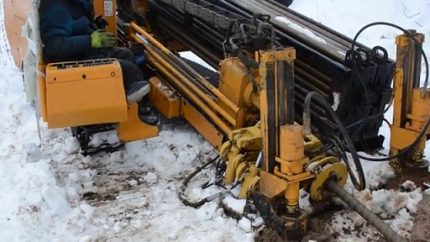

Trenchless methods of laying communications are carried out using special high-power equipment. Accurate adherence to technology will ensure a reliable well
The equipment is disassembled and removed.The microtunneling method can be used to install not only reinforced concrete, but also steel pipes. To control the correctness of the work, a navigation system is used, which consists of a laser, a target and a measuring wheel.
For long sections (more than 200 m), an electronic laser system is considered effective, equipped with a hydrostatic level, which gives accurate information about the depth of pipe laying, regardless of the air temperature inside the structure.
The subtleties of choosing the right method
The method of laying communications using horizontal drilling is chosen at the design stage of a specific process. If trenchless pipe laying is carried out as part of the construction of an object, for example, a residential building, then the work may become part of a general construction project.
When designing, the following information is taken into account:
- the length of the communications that must be laid in a trenchless way;
- diameter of the case or pipe;
- the material from which the communications are made;
- the depth at which the pipes must be laid;
- type of pipeline (pressure or gravity);
- the ability to install starting and finishing pits of suitable depth;
- access roads to the work site;
- the presence of a sufficiently spacious area for storing materials, equipment, etc.;
- groundwater level;
- other geological features of the site;
- location plan of communications already available on the site.
During the construction process, it is sometimes necessary to change an already drawn up project. This may be due to a desire to cut costs by using, for example, plastic pipes instead of steel ones. In addition, the plan for the location of underground utilities at the facility is not always accurate enough.
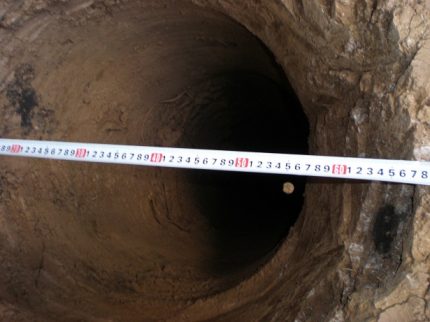

The diameter of the pipe is one of the indicators that are taken into account when choosing methods for trenchless laying of communications. The well should be slightly larger
When performing work, such unaccounted pipes or cables may be found. All these points may require changes in the project, and this may affect the decision on the method of drilling.
If the depth of the utility lines is small, there is a risk of subsidence of the upper soil layer, especially if bentonite mortar was used during drilling. In such cases, it is better to give preference to horizontal auger drilling.
Very often, the drilling method is determined by what kind of equipment is at the disposal of the organization executing the order.
For example, if builders have jacks or a horizontal directional drill, it will be preferred over the puncture method. Most often, such changes are dictated by considerations of economic benefits.
Vertical drilling and bored piles
Today, rather large and voluminous residential and industrial buildings are increasingly being erected in areas with unstable soil. To transfer the main load to more stable soil layers, bored piles are used. Our company carries out work on the installation of piles:
- Manufacturing of reinforcing cages and their immersion.
- Assembly of pile heads for the project elevation.
- Casing drilling with a diameter of 620 to 1500 mm.
- Wells concreting using VCT technology.
Bored piles are also used in dense buildings and in the city, since during the work there is practically no dust, noise, vibration and vibrations.
The bored pile technology has several advantages, including:
- Durability and reliability.
- Strength.
- Stability, especially in areas with high seismic activity.
- Possibility of BNS device close to foundations.
In addition, quite large loads can be transferred to one pile. During the work, there is no possibility of damage to the already laid communications.
Puncture method: advantages, technologies and cost
The soil is punctured using special equipment. The technology is currently the most demanded and popular way of conducting communications, especially in urban environments and areas with dense buildings.
The technology involves several stages. First of all, a well is performed, then it expands to a certain diameter, which must exceed the pipe section by at least 30%.
The third stage of the method involves tightening pipes or cases for the further laying of communication lines or electricity.
Conclusions and useful video on the topic
The process of operation of the installation for performing a guided puncture is clearly shown in the video:
A guided puncture is a highly accurate and relatively inexpensive way to lay communications under a road or other object. At the same time, it is important to correctly design all work and strictly follow the technology.
Would you like to report interesting facts related to pipe laying using puncture technology? Do you have any questions while reviewing the information provided? Please write your comments in the block below the text of the article.

